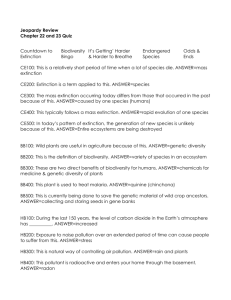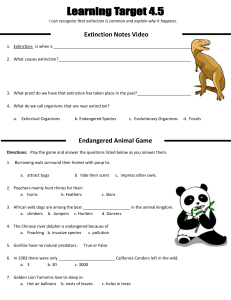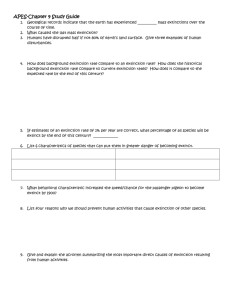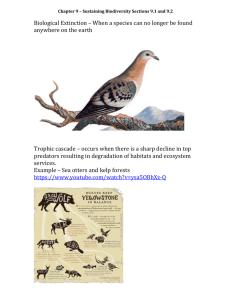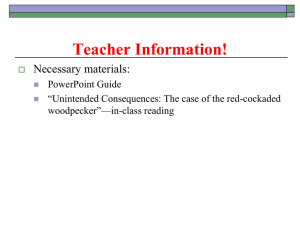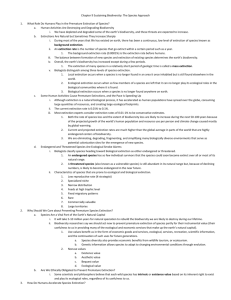APES: Chapter 12 Study Guide
advertisement
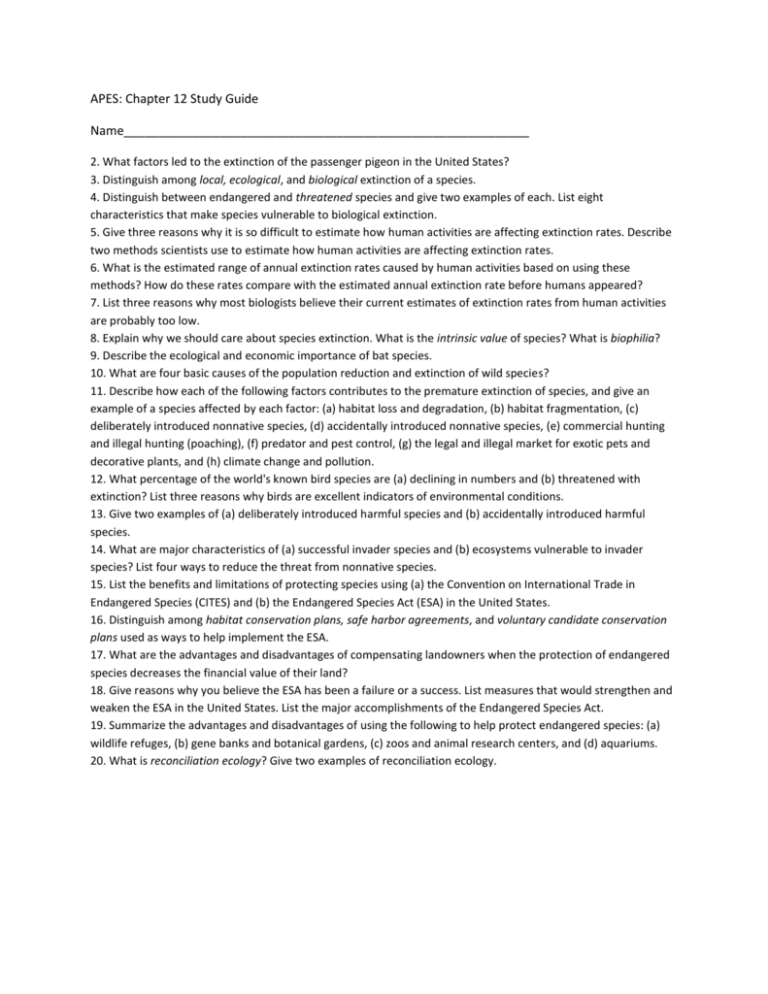
APES: Chapter 12 Study Guide Name___________________________________________________________ 2. What factors led to the extinction of the passenger pigeon in the United States? 3. Distinguish among local, ecological, and biological extinction of a species. 4. Distinguish between endangered and threatened species and give two examples of each. List eight characteristics that make species vulnerable to biological extinction. 5. Give three reasons why it is so difficult to estimate how human activities are affecting extinction rates. Describe two methods scientists use to estimate how human activities are affecting extinction rates. 6. What is the estimated range of annual extinction rates caused by human activities based on using these methods? How do these rates compare with the estimated annual extinction rate before humans appeared? 7. List three reasons why most biologists believe their current estimates of extinction rates from human activities are probably too low. 8. Explain why we should care about species extinction. What is the intrinsic value of species? What is biophilia? 9. Describe the ecological and economic importance of bat species. 10. What are four basic causes of the population reduction and extinction of wild species? 11. Describe how each of the following factors contributes to the premature extinction of species, and give an example of a species affected by each factor: (a) habitat loss and degradation, (b) habitat fragmentation, (c) deliberately introduced nonnative species, (d) accidentally introduced nonnative species, (e) commercial hunting and illegal hunting (poaching), (f) predator and pest control, (g) the legal and illegal market for exotic pets and decorative plants, and (h) climate change and pollution. 12. What percentage of the world's known bird species are (a) declining in numbers and (b) threatened with extinction? List three reasons why birds are excellent indicators of environmental conditions. 13. Give two examples of (a) deliberately introduced harmful species and (b) accidentally introduced harmful species. 14. What are major characteristics of (a) successful invader species and (b) ecosystems vulnerable to invader species? List four ways to reduce the threat from nonnative species. 15. List the benefits and limitations of protecting species using (a) the Convention on International Trade in Endangered Species (CITES) and (b) the Endangered Species Act (ESA) in the United States. 16. Distinguish among habitat conservation plans, safe harbor agreements, and voluntary candidate conservation plans used as ways to help implement the ESA. 17. What are the advantages and disadvantages of compensating landowners when the protection of endangered species decreases the financial value of their land? 18. Give reasons why you believe the ESA has been a failure or a success. List measures that would strengthen and weaken the ESA in the United States. List the major accomplishments of the Endangered Species Act. 19. Summarize the advantages and disadvantages of using the following to help protect endangered species: (a) wildlife refuges, (b) gene banks and botanical gardens, (c) zoos and animal research centers, and (d) aquariums. 20. What is reconciliation ecology? Give two examples of reconciliation ecology.
